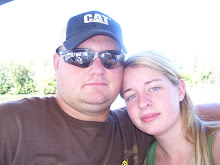I really wanted to get the garden mulched today but that didn't happen. Both of our wheelbarrows are full, one has a flat tire, and I really didn't feel like opening up the big shed doors to lug out a bunch of hay for mulch.
So instead, I dug up all of our carrots. The book Root Cellaring by Mike and Nancy Bubel is a great one to study in regards to food storage. Since the book said carrots can be left in the ground all winter in milder climates, I figured mine were safe out there for awhile. However, with lots of freezing temps in the forecast I needed to get them out before the ground froze. I think they were on the verge of getting too big, not sure how that would work if you left them in the ground all year.
Here is a picture of this year's crop:

After changing in to dry clothes (it did start raining on me) and warming up, I sorted and cleaned up the carrots. Any carrots that were affected by worms or too small to bother storing went in a bowl for the rabbits, along with all the green tops. I'll feed them a handful a day along with their regular diet. Most of the carrots I just snapped the tops off of, wiped them down with a dry washcloth, and snapped the long, thin tip off the root. I picked out 10 exceptionally nice carrots to save for seed next year. I just wiped them down and trimmed the tops down to an inch or two, leaving the tips long
Here's what I ended up with after sorting:

Seed carrots

Carrots to eat

Carrots and tops for the rabbits
According to the book, you can store the carrots by layering them in a box or can in damp sand, sawdust, or leaves. We have a lot of leaves but it seems like they would get very slimy and I don't like the idea of reaching in to slimy leaves for dinner. I also worried sand that sand might introduce bugs or, around here, remnants of cat poop. I felt safest using sawdust and our friends gladly supplied me with a huge bag full. It was actually more like wood shavings, which I think will work fine.
My husband just mentioned one of our coolers had lost the drain plug and sprung the hinges so he was going to put it in the garbage. I found it in the garage and it turned out to be the perfect container for storing carrots.
I didn't have a spray bottle to wet the sawdust with. Instead, I filled a pot with water and dumped in the shavings a little at a time. Then I could scoop out handfuls and squeeze them out. Per the book, I spread a 1 inch layer on the bottom, laid the carrots out in a single layer, covered them with another inch of shavings, and repeated. Like this:

Wetting the sawdust

One layer of carrots

Covering them with another inch of material

My workstation
When I was done I added another inch or two of sawdust and covered it all with a couple of layers of wet newspaper. The book says they should last until May or later if kept cool and moist. Specifically, they like 32-40 degrees F and 90-95 humidity. I'll be moving the cooler to our upstairs where it is not heated and should stay quite cold. If it gets too warm there I'll try the attic since that is not insulated. Frequent checks to keep the shavings and newspaper damp should help.
I stored the seed carrots with the rest and will pull them out and plant them again in the spring.
Feel free to share your storage techniques for carrots, or let me know if this helps you! :)
Again for the month, I'll be adding a note about something I'm thankful for to each post. Today was easy - of course I'm grateful to have all this great food! It is such a wonderful feeling being able to set aside food to feed us throughout the year. I'm lucky to have a place to do it and the resources to learn how.











No comments:
Post a Comment